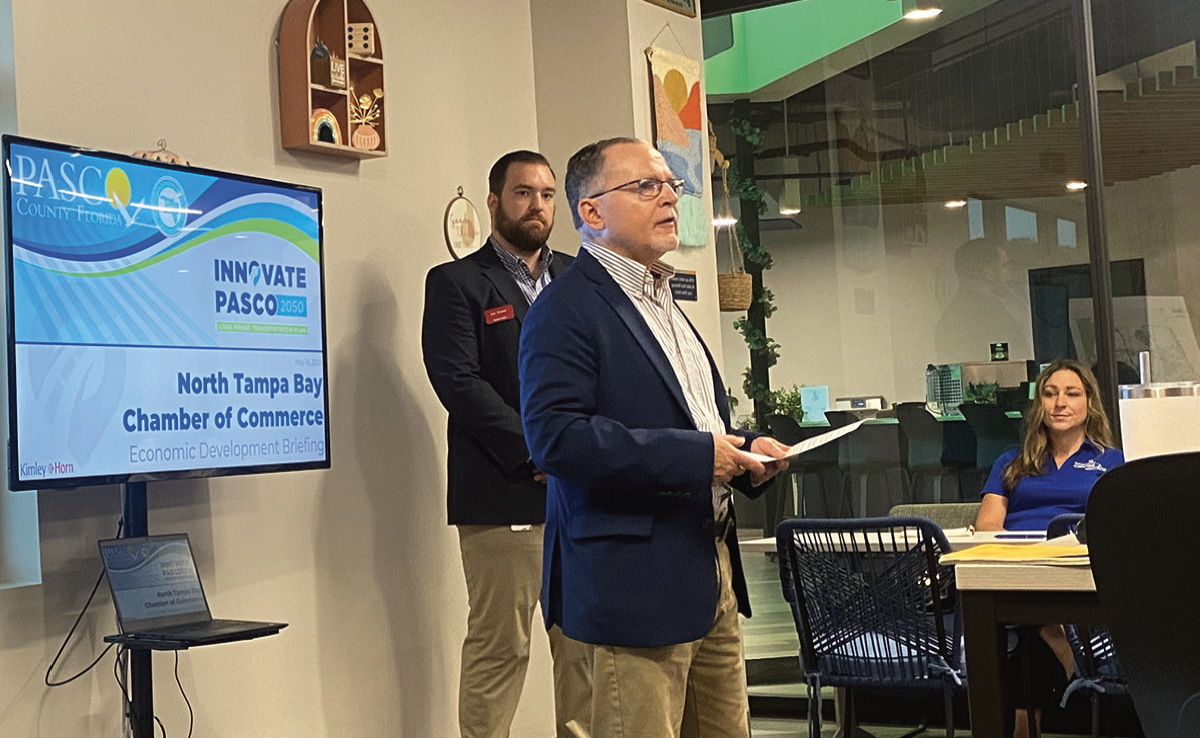
Even with all of the transportation improvements completed over the past few years, there’s no doubt that the roads in Pasco County in general — and the Wesley Chapel area in particular — are a lot more crowded today than they were before those improvements were finalized. Without a long-term transportation plan in place 20, 30, or even 50 years ago, however, our traffic situation would unquestionably be far worse.
To that end, representatives from (and the private firm working with) the Pasco Metropolitan Planning Organization, or MPO (the county’s federally-funded primary transportation planning entity), have been making the rounds throughout the county to ask people what planned road improvements should be prioritized between 2025 and 2045.
The MPO’s long-term transportation plan, dubbed “Innovate Pasco 2050,” was presented to about 25-30 North Tampa Bay Chamber (NTBC) members at the Chamber’s monthly Economic Development Briefing on May 14 at its Suncoast Office off S.R. 54 in the Bexley community of Land O’Lakes.
“The MPO’s mission is to find out what the transportation needs are for the county and develop solutions for those needs,” said Scott Ferry, the Pasco MPO’s principal transportation planner. “One of the ways that we accomplish this mission is by meeting with the public throughout the county, which is what we are doing here today.”
Ferry also explained that the MPO is governed by a nine-member Board which is “comprised of the five Pasco County commissioners and four municipal representatives (from the cities of Dade City, New Port Richey, Port Richey and Zephyrhills). “This MPO Board meets on a regular basis to discuss and make decisions about transportation policies and issues in the county.”
He said that when the plan is adopted, “it’s going to serve as a guide and a blueprint for county transportation planning for the next five years (2025-29). We’re here to engage with you and see what you believe the transportation priorities should be for the county.”
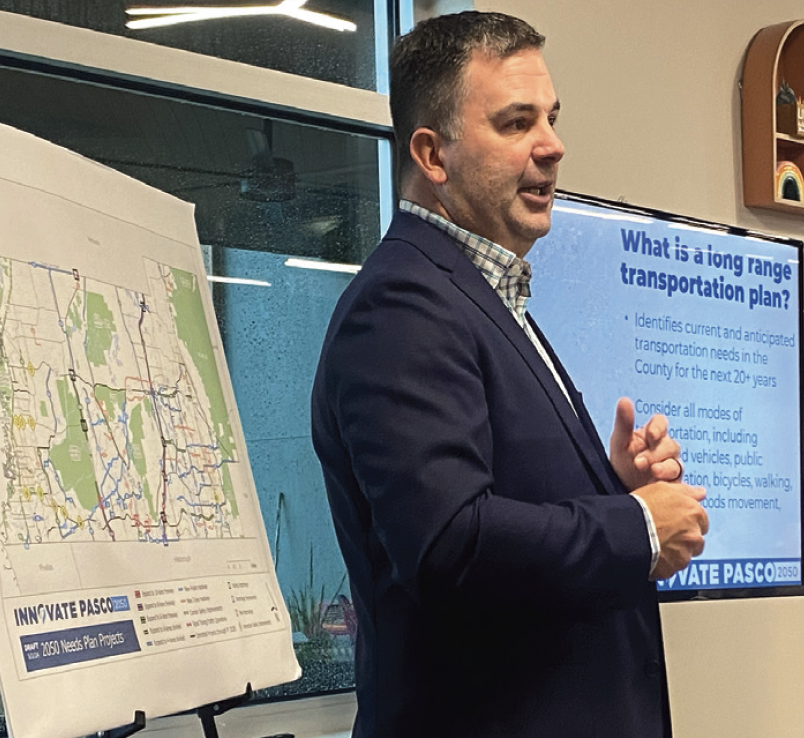
He then introduced Jonathan Whitehurst and Joe Crozier of private transportation planning consulting firm Kimley-Horn & Associates, which has been retained by the MPO to assist with the “Innovate Pasco 2050” planning process.
Whitehurst, a North Carolina resident whom Ferry said has 18 years of experience helping develop transportation plans throughout the country, and Crozier — a life-long Pasco County resident — then explained the process by which MPOs create not only their long-rang plans but also the short-term (five-year) Transportation Improvement Plan (also known as the “work plan”) so planned improvements can be funded by the various government entities, whether state/ federal, local (county and city), or a combination of funding sources.
“We’re starting with the 2045 plan to see what’s different and what’s changed,” Whitehurst said, “and the short answer is that in the last five years, a lot has changed in Pasco County, which makes our job a little bit harder because we first have to find that baseline condition as to where things are now so we can start to predict where things are going to be in the future.”
Whitehurst also mentioned that although the primary discussion in MPO plans is usually about roadways, traffic, safety and congestion, “We look at all modes of transportation, including bike facilities, pedestrian facilities, transit, freight and even a little bit of air travel, so it truly is a multimodal transportation plan.”
He also noted that the MPO and Kimley- Horn started working on the plan in Oct. 2023 and hope to have it finished sometime this month, “so we’ve got quite a bit of work to do to get it done. The plan itself will be adopted later this year. As soon as the MPO adopts the plan, that five-year cycle starts over.”
He said that where the planners are now is “at the very end of the ‘Needs’ plan, which identifies the universe of possible projects. We took a look at how we think Pasco is going to grow between now and 2050, where our facilities are now, where we have already-funded projects in the future and we said, ‘OK, where are the problem areas?’ And, we found that there are a lot of problem areas. So, the needs plan is trying to address as many of those problem areas as possible, trying to say that if these are the potential problem areas, these are the projects and solutions we are going to need to solve them.”
Whitehurst noted, however, that there is always, “a big list of projects, but we only have a small amount of money. So then, we have to figure out what are the priorities among the projects that we’ve identified, so that’s where the project prioritization process comes in. We put all of the needed projects on a spreadsheet and see which ones rise to the top.”
And, speaking of money, Whitehurst said that, “Concurrent with that, we have to see how much money we have to spend on transportation projects, so we take that prioritization list, compare it with the money and see how far down the list we can make it. That’s what we call the cost-feasible plan.”
Crozier then explained that for the purposes of the study, the county was divided into three sections — west of the Suncoast Pkwy., between the Suncoast and I-75, and east of I-75. And, although the growth in Pasco previously has been on the west coast, the central and eastern areas are now growing faster, “but all of Pasco is growing and all of that growth requires infrastructure.”
Crozier and Whitehurst also noted that because Pasco continues to add homes and businesses, part of the study looked at the different types of jobs that are coming — especially in the greatly expanding medical field in our area and how those different types of jobs also impact the transportation needs differently.
And, Crozier admitted that despite the best-laid plans of previous planners, because the county has grown so quickly, “we’re actually hitting now many of the previous projections for 30 years from now. A lot of the growth models, especially after Covid, are just not accurate anymore” and all of that has made the prioritization process a lot more complicated.
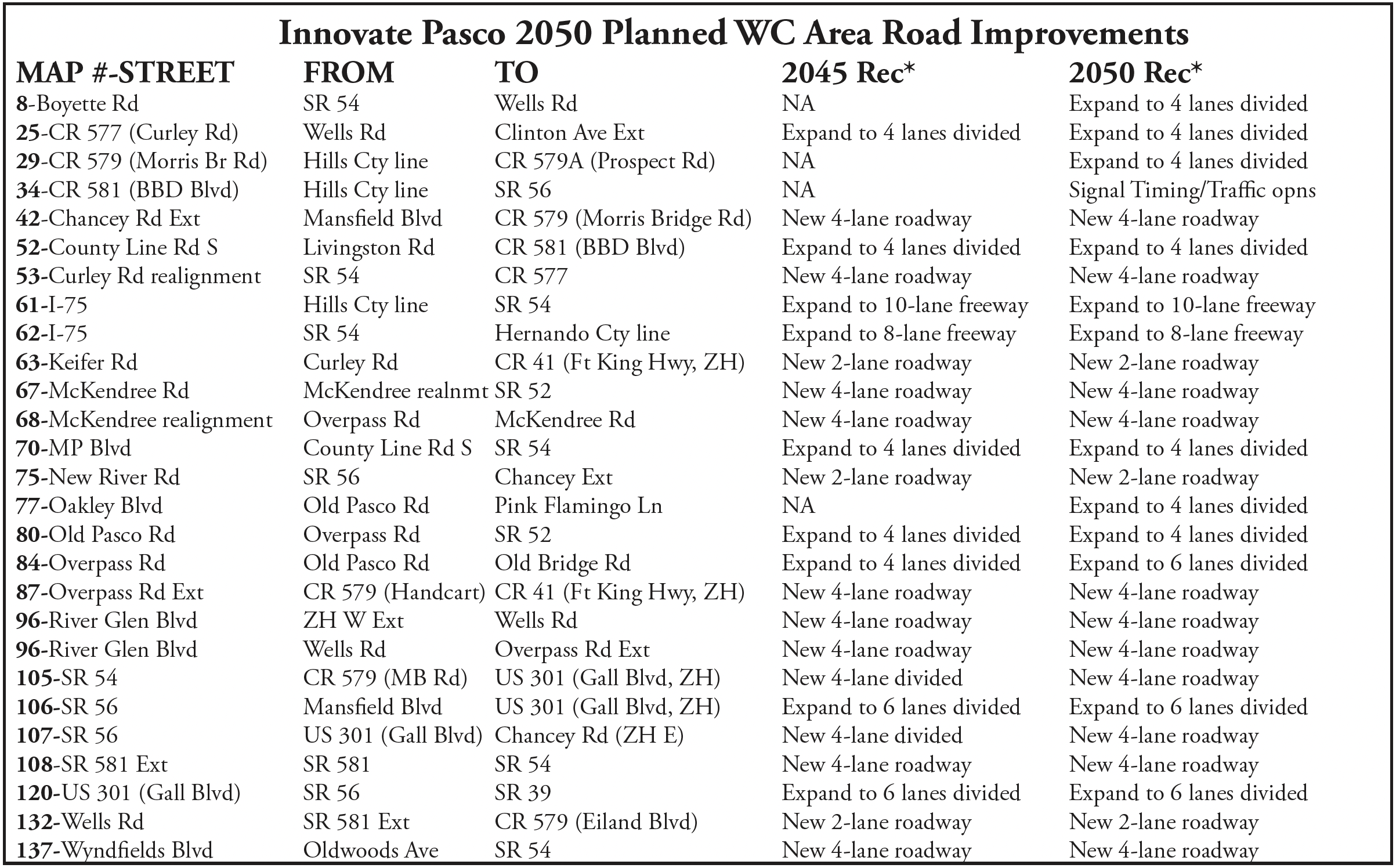
Although Whitehurst and Crozier presented a countywide list of more than 120 transportation projects that are planned to be funded, we have only shown the 27 planned improvements that either are located in Wesley Chapel, or at least border directly on Wesley Chapel, in the chart on this page. The problem, Whitehurst said, is that “While we would love to have enough money to pay for all of these projects, at the end of the day, we still don’t have enough money.”
He said that if you want to learn more and provide input on the plan, go to InnovatePasco.com, which has both the complete list of planned projects and the map on the next page in an interactive format that will allow you to zoom in on the areas of the map that might be most important to you and drop ‘pins’ on the map and provide us with comments about those needs and the plan itself.
“Please spread the word, too, because the more people we can get involved in the website, the more info we can collect.” He noted that earlier this year, there were more than 1,100 people who already had left comments on the website.
Meeting attendees were given the opportunity to ask questions and make comments following the presentation, and there was agreement that the Diverging Diamond Interchange at S.R. 56 and I-75 has been the most impactful recent transportation improvement and that Wesley Chapel Blvd. is the most-needed improvement in our area. Other complaints expressed at the meeting are the length and lack of synchronization of traffic signals and that it seems like road improvements are always behind development.
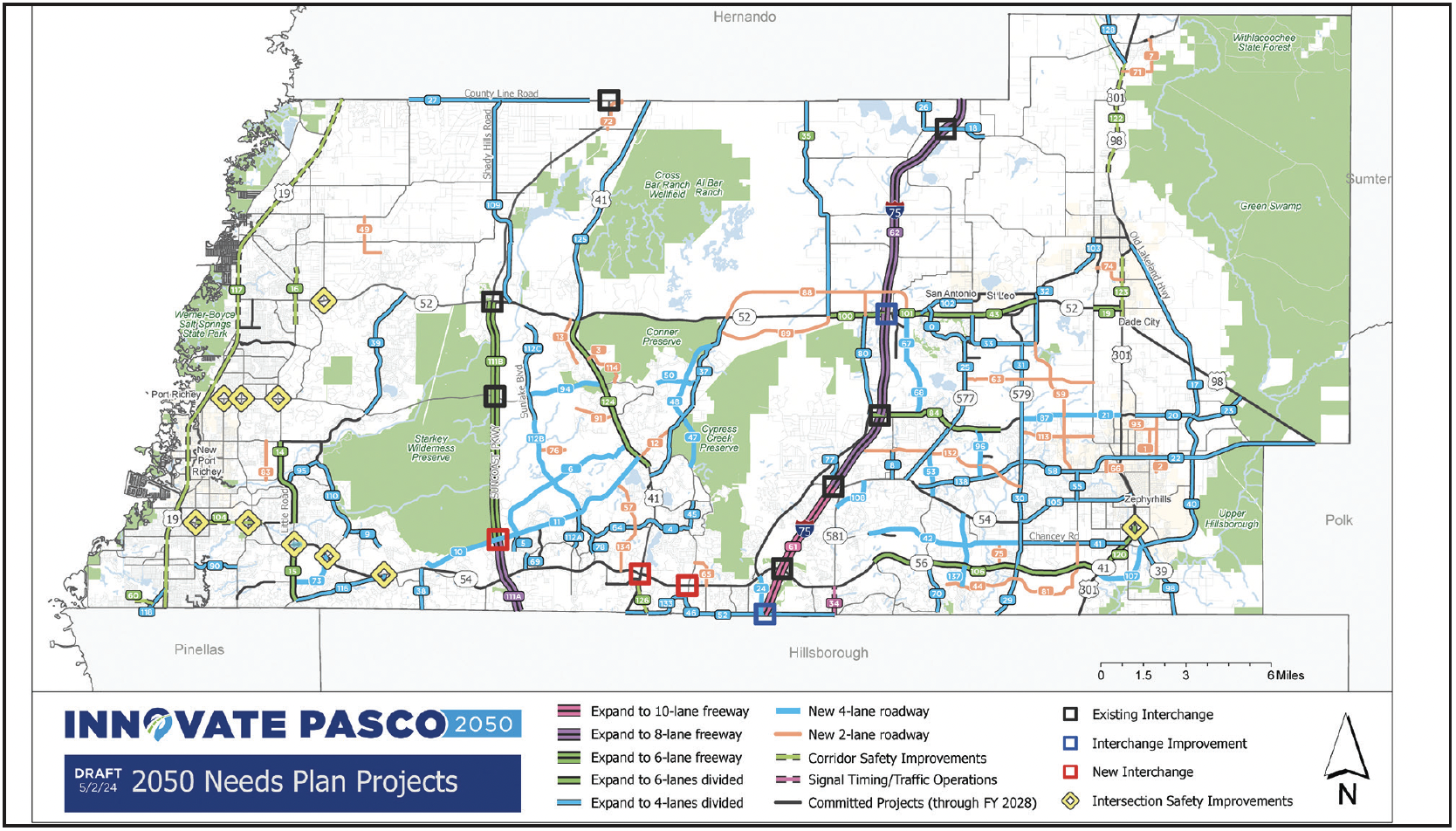



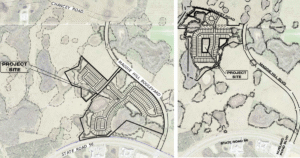
No comment yet, add your voice below!